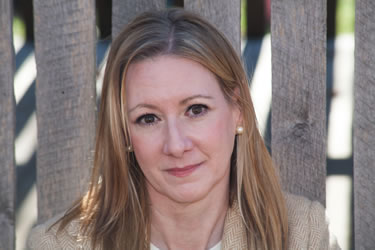|
One of my first writing teachers spoke about writing as art, said there were many technically proficient writers, but very few who created art. I nodded and pretended to understand.
The idea rattled around in my head until I couldn't sleep. I asked teachers in every class and workshop and reading to tell me, "What makes a piece of writing into art?" They all said good question, they all breathed through a long silence, and they all answered with a different list.
It took me awhile to figure out that the list is different for everyone. And why wouldn't it be? Art is different for everyone. Most people agree on the mainstream, but what about the edges? From Mark Rothko's colored rectangles to Marcel Duchamp's upended bicycle wheel mounted on a stool, to John Cage's 4'33" of only found sound, to Pina Bausch's "The Rite of Spring" where dancers performed on a stage covered in soil, to Christo and Jeanne-Claude's landscape fabric wrappings. And what about Campbell's soup can labels? The 1963 Corvette Stingray? The Eames Lounge Chair and ottoman? The Guggenheim Museum building itself? The Grand Canyon? A fresh snow? Ant hills cobbled into perfect pyramids from tiny grains of sand? The yell of the train conductor as he enters each car, "Tickets please." And what about the news? The everyday, all-day-long journalistic reporting of human shortcomings and natural disasters. Art?
I had to find what spoke to me—decide whether art comes from order or chaos, the seen or unseen. I had to define art because I knew I couldn't create what I couldn't identify.
For me, I decided writing that elevates itself to art has at least three elements—language, crazy, and resonance. I first look for language—interesting voice that jumps off the page, unusual syntax that says we're not quite in the land of normal, rhythm that demands I stop and reread, and vivid images that make me see and hear and feel. I also appreciate stories that go anywhere, where crazy happens and you can't help but believe it. And art should create resonance, something that smudges onto the reader and sticks. I decided if I could use Anne Carson sentences to write an Etgar Keret story that Eudora Welty would be proud of—and do that in my voice—then I could create art. My art. The way I define it and see it in my mind.
But how do I get there?
I recently watched a documentary, Lost Songs: The Basement Tapes Continued, where T Bone Burnett brought together great musicians—Elvis Costello, Rhiannon Giddens, Taylor Goldsmith, Jim James, and Marcus Mumford—to create new music from long-lost Bob Dylan lyrics. The documentary shows a behind-the-scenes look at their collaboration and offers a great view of how the creative process works.
Throughout, Rhiannon Giddens, an American folk singer, tries to create her vision of art with the song "Lost on the River," and it's beautiful because her voice is beautiful, and the other musicians tell her it's beautiful, but she shakes her head and knows it's not right. It doesn't feel right. She tries again, stops in the middle, gets frustrated, analyzes details, shakes her head some more. What she hears out loud isn't what she hears in her mind.
T Bone Burnett looks on and says, "Self consciousness kills creativity." He tries his best to keep the musicians calm and positive.
Throughout the documentary, Rhiannon Giddens keeps trying. The other musicians encourage her. She thinks she doesn't have as much experience as they do. She has the usual self doubts we all carry around with us. She picks the song up; tries again. Puts it aside. Picks it back up. Each time, each version is so lovely and I keep telling her that through the television. But good enough is not good enough so she keeps trying, and by the end, what she hears finally matches her vision and the song reaches another level and even though I'm not a musician, I can hear it and I can tell it's art.
Afterward, she's relieved, laughing again, says in order to make art, you have to somehow detach from it. That the energy is different when you know what you're doing will be heard by an audience rather than when you're just having fun with no intention of showing anyone. I nod at the television and I know what she's talking about because each time I sit at the computer my fears and expectations take a seat next to me.
Creativity is that elusive flutter of light at the edge of your vision that disappears when you try to look directly at it. In her book, The Creative Habit, Twyla Tharp says this "…is the most interesting paradox of creativity: In order to be habitually creative, you have to know how to prepare to be creative, but good planning alone won't make your efforts successful; it's only after you let go of your plans that you can breathe life into your efforts."
So it seems the secret to getting to that place where art can happen, is to not think about getting there. Yes, all this research and introspection to get a blueprint of art and a map, and I have to roll it all up and put it away, forget about anyone but me reading the story. I need to be open to everything I've seen and heard and let it filter through my brain to get to that place where the words stick to the page and anything goes. That will mean sending my fears and expectations out of the room while I write.
Elvis Costello says it most succinctly: "Find the joy."
I'm grateful to that teacher who first spoke of writing and art. Without it, I wouldn't have known what to look for. I wouldn't have known to even look.
| 

